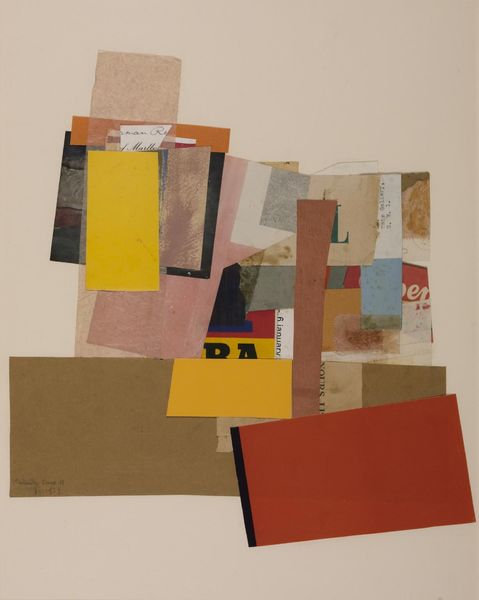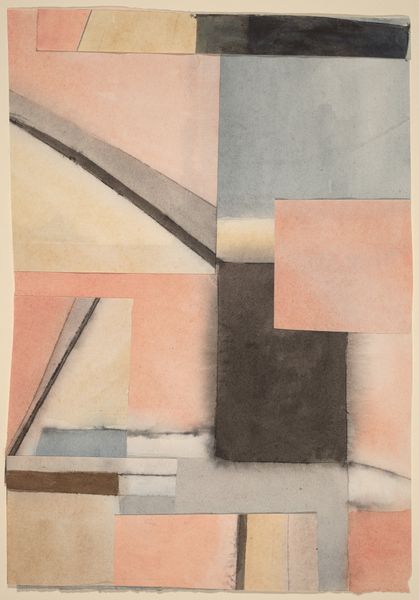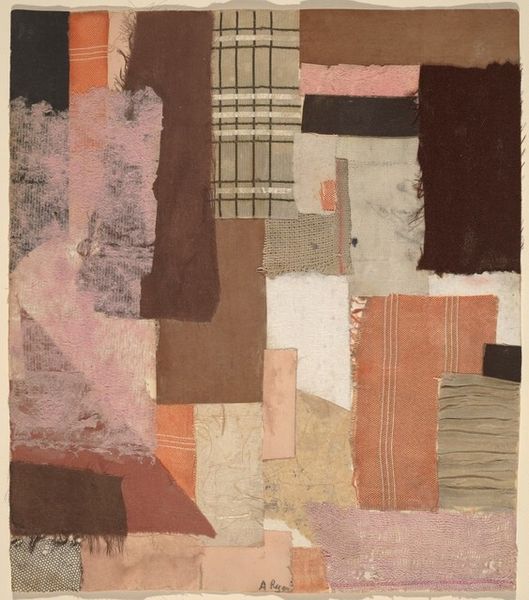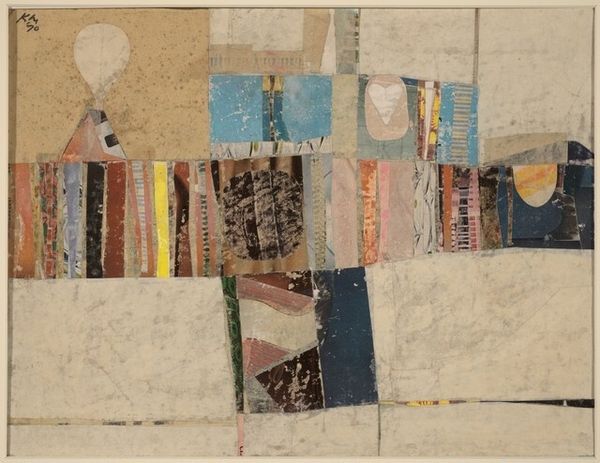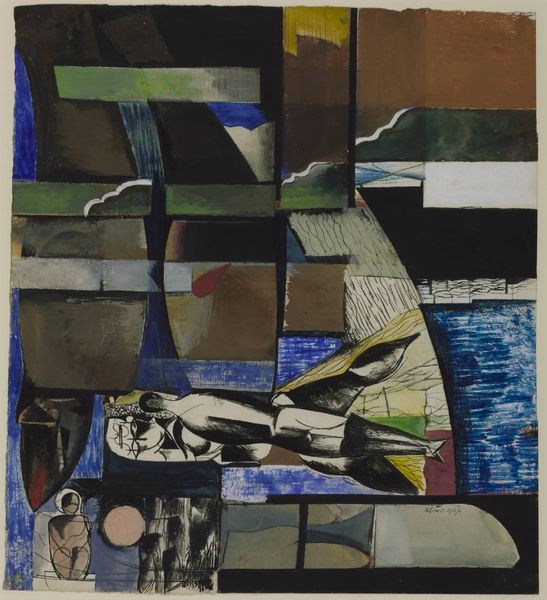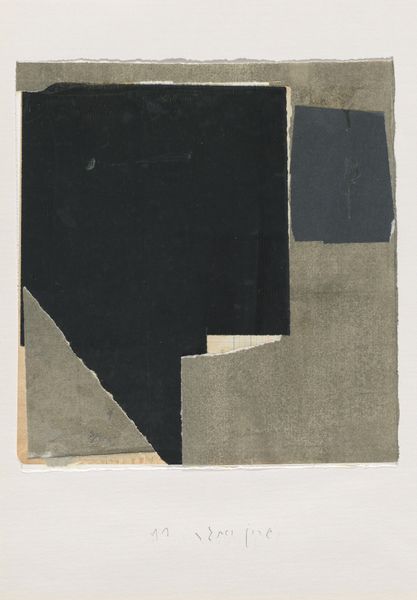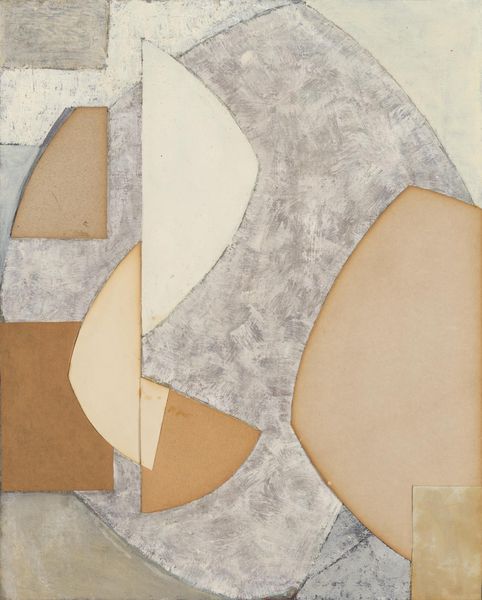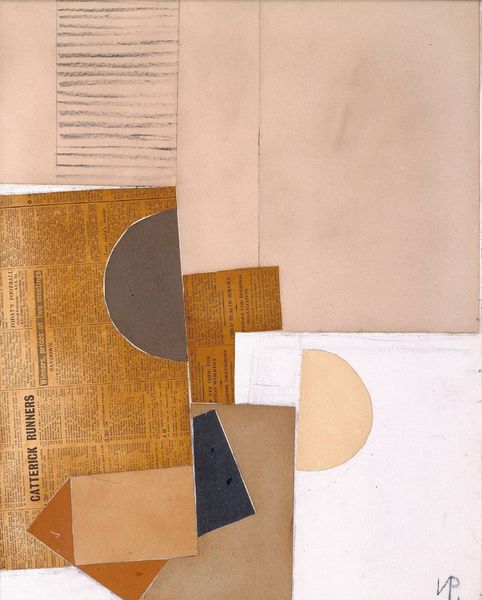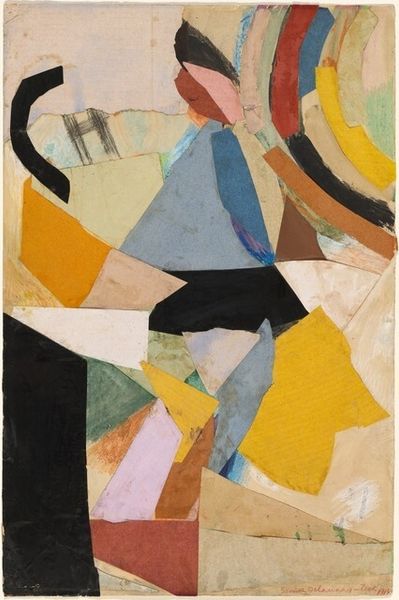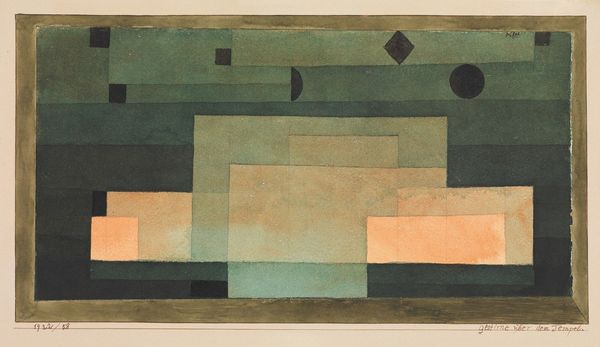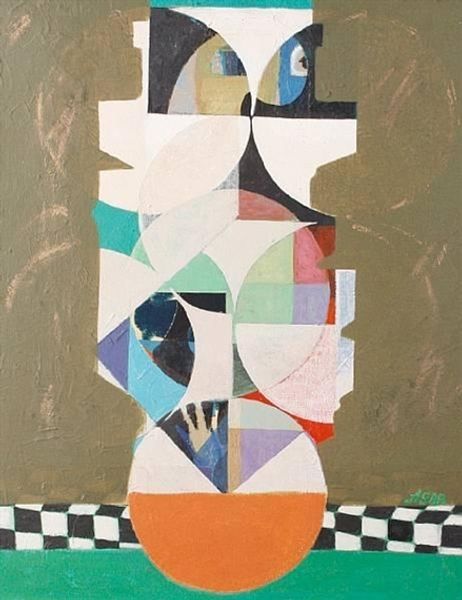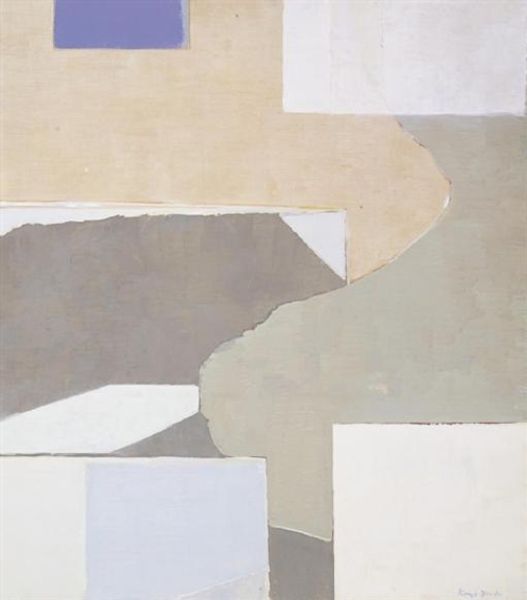
Dimensions: height 234 mm, width 182 mm
Copyright: Rijks Museum: Open Domain
Editor: This is Kurt Schwitters' "Tea Rose," a 1924 collage. The geometric shapes and muted browns give it a rather somber, architectural feel, despite the flower and "Teerose" title scrap. What’s your interpretation? Curator: Schwitters created this collage during a tumultuous time in Germany, specifically within the Dada movement. The collage embodies the anti-art sentiment of the Dadaists but extends this idea through a lens that reflects its fractured social structure and institutions. See how fragments of printed matter are juxtaposed to subvert traditional notions of beauty and representation. What does that say about the perceived purpose of art itself at that time? Editor: I see it! The seemingly random arrangement of paper feels almost like a deconstruction, pulling apart the established art world. Curator: Precisely. Schwitters created a sense of displacement in the work to highlight the chaotic nature of postwar European society. The found materials become poignant artifacts which symbolize daily life but are disjointed when seen within the greater cultural implications of “high art.” How does its aesthetic challenge ideas of social repair and institutional identity? Editor: By rejecting conventional composition and beauty. But placing "Tea Rose" as a sort of stamp gives it this irony to connect with high art standards in some capacity. Curator: Good observation. The placement questions the value society placed on both commercial commodities, or the promise of a good future and their placement of these items in a canonized artform. Editor: It’s like he’s highlighting the inherent contradictions within culture itself! I had originally understood this piece at face value, but this gives the imagery real, meaningful historical significance. Curator: Indeed, considering art within its socio-political context always enriches our understanding of its broader commentary.
Comments
rijksmuseum about 2 years ago
⋮
This collage is made of all kinds of scraps of paper that Kurt Schwitters gathered from the streets. He took suitcases full of scavenged trash and objets trouvés with him when he travelled. In the abstract composition of brown, grey, pink and black angular planes, he attached an illustration of a rose. Another fragment identifies it as a tea rose. Such a bit of reality is a light-hearted counterbalance to the sober abstract composition.
Join the conversation
Join millions of artists and users on Artera today and experience the ultimate creative platform.
